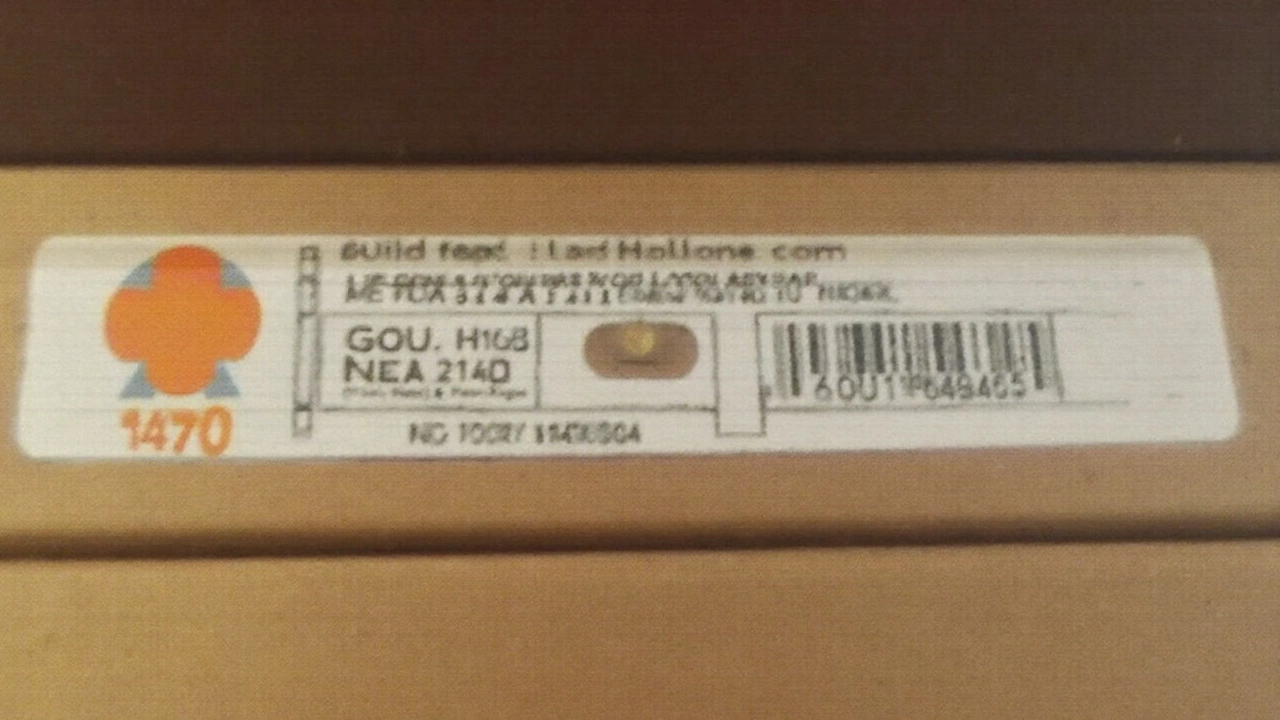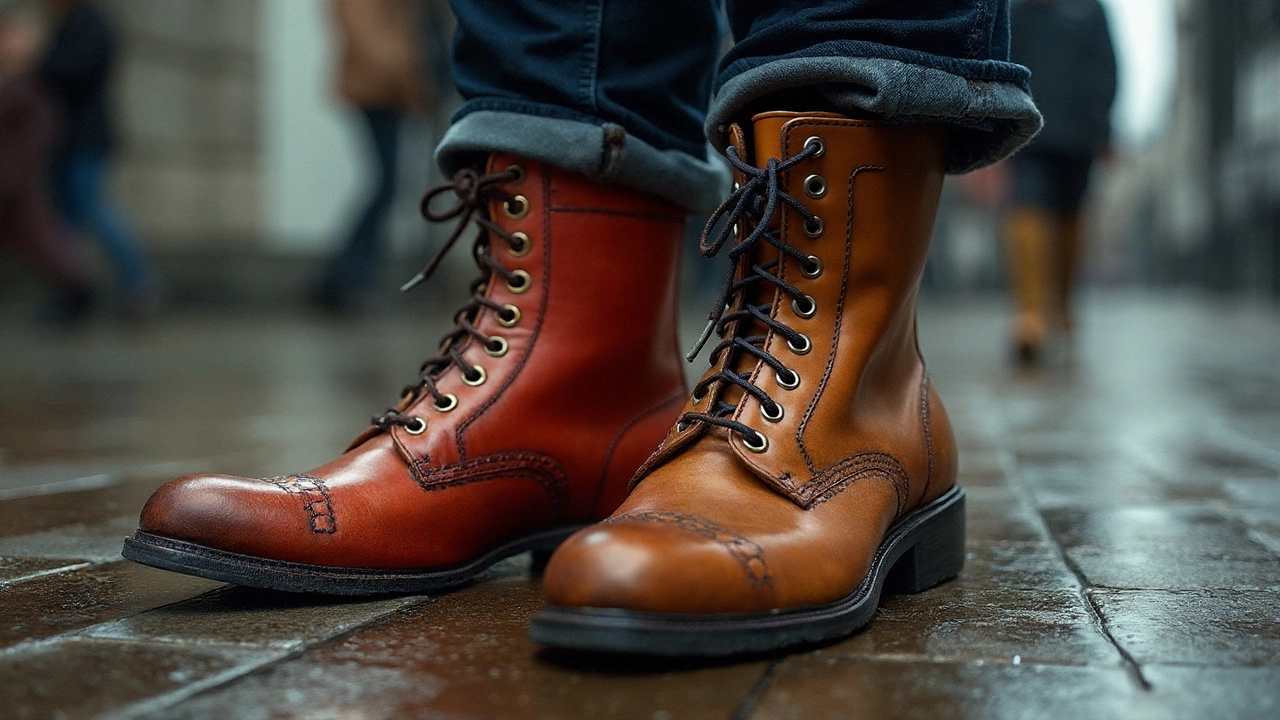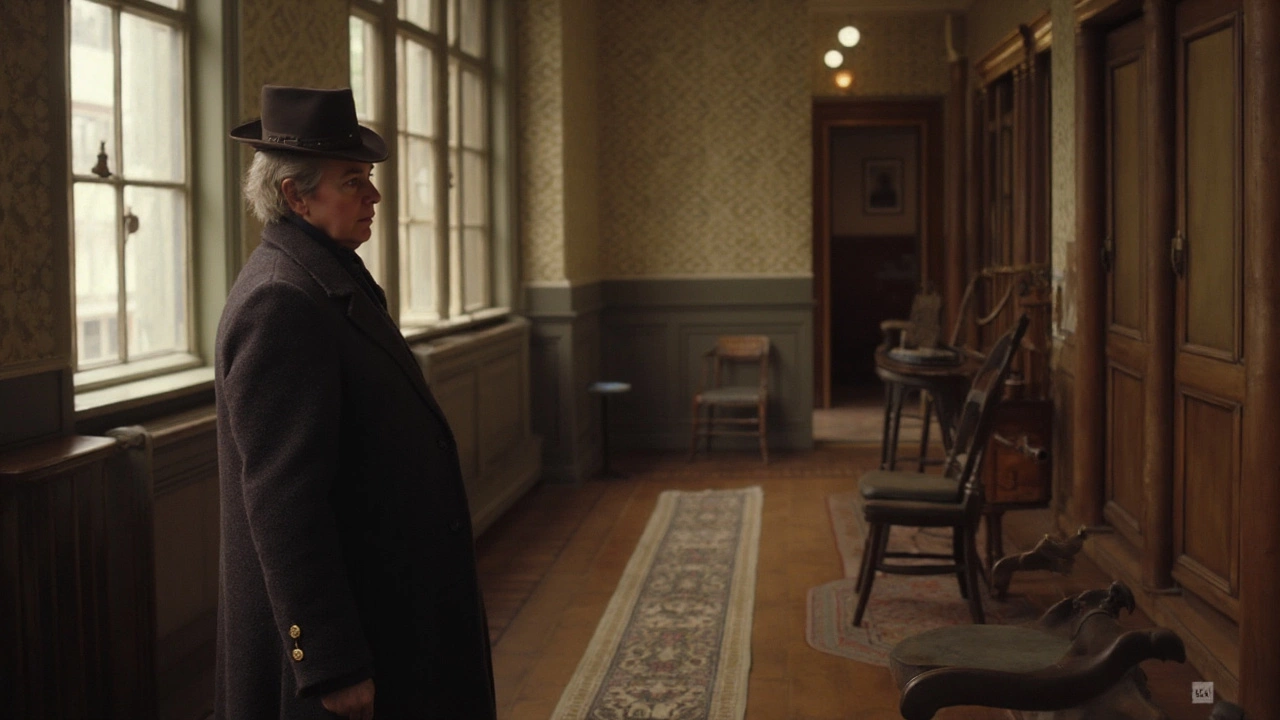You laced up your Thursdays, walked a few laps, and something feels off. Are they supposed to slip like that? Should your toes have this much room? Getting the right boot fit is the difference between a pair you wear everywhere and a pair that gathers dust. Here’s a straight-shooting way to know if your Thursday boots are too big - with fast tests, clear thresholds, and what to do next.
TL;DR:
- If you can slide two fingers behind your heel when fully laced, they’re too big. One finger snug is okay.
- Acceptable heel slip during break-in: about 3-6 mm (a ‘tick’ of movement). More than that usually means too big.
- Toe room: aim for ~10-15 mm in front of your longest toe; well beyond that often equals too long.
- Lace gap: a clean V-shape with 1-3 cm between facings is good; facings touching but foot still loose = too big in volume.
- Crease check: first flex line should form across the ball of your foot. Crease far forward = boot is too long.
The Fast At-Home Fit Tests (5 minutes)
Do these right away on clean flooring so you can still return or exchange if needed. Test both feet; most people have one foot slightly larger.
- The one-finger heel test
- Put on your normal socks for boots. Lace tight like you would for a walk.
- Try sliding one finger down the back of your heel into the boot. You want a snug one-finger fit. If two fingers slide in easily, the boot’s too big in length or volume.
- Heel slip while walking
- Walk 15-20 steps on a firm surface. A new leather boot can have a small ‘tick’ of heel slip (3-6 mm) for a few wears.
- If your heel lifts enough to feel a clunk, or you can hear it slap, that’s beyond normal break-in.
- Toe room tap
- Stand up straight, then gently tap your toe to the floor. Wiggle your toes. You want about a thumb’s width (roughly 10-15 mm) ahead of your longest toe.
- If you can push a full index finger sideways in front of your toe while standing, they’re likely too long.
- Lace gap look
- With boots laced firm but comfortable, look at the gap between the two lace facings.
- A tidy V-shape with 1-3 cm of gap is normal. If the facings touch and you still feel loose, you’ve got excess volume - a common sign the size is too big.
- Flex and crease check
- Do a shallow lunge. Where does the leather crease?
- The first crease should form across the ball of your foot. If it forms well ahead of the ball, the boot is likely too long.
- Insole stand test (quick volume check)
- Remove the insole (if removable). Stand on it, weight evenly distributed. Your foot should sit within the insole outline with a touch of extra at the toes.
- If you’ve got a big border of insole showing around your foot, the boot might be long and wide for you.
What’s Normal vs Too Big: Clear Thresholds You Can Feel
You don’t need a lab to size boots, but a few numbers help you decide fast. These are common fit benchmarks used by boot fitters and footwear testers.
| Fit signal | Normal range | Too big signs | What it points to |
|---|---|---|---|
| Heel slip (new) | ~3-6 mm | >6-8 mm, audible slap | Length or heel volume too large |
| Toe room ahead of longest toe | ~10-15 mm | >15-20 mm | Boot too long |
| Lace gap (most lace-ups) | ~1-3 cm V-shape | Facings touch yet still loose | Too much volume; consider smaller size |
| Crease location | Across ball of foot | Well ahead of ball | Too long; flex point mismatch |
| One-finger heel test | One finger snug | Two fingers easy | Too long and/or too much volume |
Two common confusions to clear up:
- ‘They’ll shrink’ - Leather doesn’t shrink to fit like denim. It softens and molds around you but it won’t lose length. If they’re too long, time won’t fix it.
- ‘Break-in will stop heel slip’ - A small tick of slip often fades as the heel counter grips better. A big clunk won’t. That’s a size/volume issue.
Authoritative fit pointers you can trust:
The space in front of the longest toe should be about half an inch. A shoe that is too long or too short can cause discomfort and problems over time. - American Podiatric Medical Association
Boot fitters and labs like SATRA also emphasize matching the flex point of the boot to your foot’s ball. When that’s off, you see creasing ahead of the ball and feel sloppiness even if the toe room looks okay.
One more thing: measure both heel-to-toe and arch length on a Brannock device if you can. Fit the larger measurement. That simple step solves a ton of size misses, especially for high arches.

Thursday-Specific Notes: Styles, Sizing, and What To Expect
Thursday Boot Company builds on structured lasts and sturdy leather. That means the boots feel snug in the right places once broken in, not loose. Here’s how common Thursday styles tend to behave on-foot:
- Lace-up service boots (e.g., Captain, President, Vanguard)
- Brand guidance often suggests going down half a US size from your typical athletic sneaker size for many lace-up styles.
- What to look for: a tidy V-shaped lace gap, heel locked with only a small tick of slip at first, and the first crease across the ball.
- Plain-toe/heavier soles (e.g., Diplomat)
- Chunkier outsoles can hide extra length because they feel stable even when long. Watch crease position and heel slip to catch a too-long fit.
- Chelsea boots (e.g., Duke, Cavalier)
- Pull-on styles demand a glove-like midfoot. If you need to double socks to stop slip, they’re too big.
- You want a firm hug at the instep and a clean, quiet step. Loud heel slaps in Chelseas almost always mean wrong size.
- Wide feet
- Going longer to gain width is a trap. Your creases migrate forward and heel lift gets worse. Look for wide options or a last that runs roomier in the forefoot.
If you’re between sizes, check the product page notes for Thursday Boots sizing. Different lasts can change the feel: a sleeker last will feel snugger at the instep, a roomier last will feel more forgiving. That’s by design.
Regional conversions: Thursday lists US sizes. For reference, US men’s to EU is often US 9 ≈ EU 42, US 10 ≈ EU 43, but brands vary a touch. If you’re outside the US, use your Brannock measurement or a recent pro measurement rather than guessing off old sneakers.
Break-in expectations with Thursdays:
- Days 1-3: leather stiff, small heel tick, laces need retightening during the day.
- Days 4-10: forefoot eases, heel counter grips better, slip reduces if initial fit was close.
- After ~2 weeks of regular wear: if heel still clunks or creases sit far forward, size is likely off.
Fix It or Swap It: Practical Moves That Actually Work
First decide: is the miss slight or major? If you’re only a hair off in volume, small tweaks can lock the fit. If length is clearly too long, cut your losses and exchange while you can.
When tweaks make sense (length is right, volume slightly generous):
- Lacing techniques
- Runner’s loop (heel lock): creates extra tension around the ankle to cut heel slip. Great on Captains and Presidents.
- Skip an eyelet over the instep: removes pressure there and lets you tighten elsewhere without discomfort.
- Tongue pads
- Stick-on felt pads under the tongue fill instep volume without changing length. A classic cobbler move that often fixes mild heel lift.
- Insoles/footbeds
- Thin volume reducers or a supportive insole can take up a bit of space and firm up the heel. Don’t overstack; too much lifts your heel and changes how the boot flexes.
- Sock strategy
- Switching from thin dress socks to cushioned boot socks can help if you’re just slightly loose. If you need two pairs to stop slip, the size is wrong.
When to exchange (save yourself blisters and creases):
- Your heel clunks even with a heel-lock lacing and proper socks.
- There’s far more than 15 mm in front of your longest toe while standing.
- Creasing forms well ahead of the ball of your foot after a couple short wears indoors.
- Lace facings touch and the boot still feels loose around the midfoot.
Return window basics
- Most brands (including Thursday) allow exchanges on unworn pairs in new condition within a set window (often around 30 days). Keep soles clean while testing at home.
- Walk on a clean rug or cardboard, not outdoors. Any scuffing on the outsole can void returns.
Watch-outs and pitfalls
- Over-tightening to ‘fix’ volume can cause lace bite over the instep. Pain is a red flag, not a solution.
- Don’t size up to gain width. Seek a wide width or different last.
- Don’t count on ‘shrinking’ leather. It doesn’t happen. Leather molds, it doesn’t shorten.
Simple decision guide
- If length is right and you have a touch of heel slip: try heel lock lacing + proper socks. Add a tongue pad if needed.
- If length is long (excess toe room and forward creases): exchange for half a size down.
- If forefoot is tight but heel is loose: wrong last/width. Don’t go longer; try a different width or model.

Mini‑FAQ and Troubleshooting
How much heel slip is okay in a brand-new pair?
A small tick, roughly 3-6 mm, is common with new leather counters and smooth socks. If you hear or feel a clunk, it’s too much.
Will thick socks solve a size too big?
Thick socks can tame slight extra volume, but they won’t fix a boot that’s clearly too long. If you need two socks, size is wrong.
Can a cobbler tighten the heel?
A cobbler can add tongue pads, heel grips, or a thin footbed to fine-tune volume. They can’t shorten the boot. Major length issues need an exchange.
What about different socks between seasons?
In winter, cushioned wool socks can help snug the fit. In summer, use lighter socks and consider a thin insole to keep the feel consistent.
My right foot is bigger. Which size do I choose?
Fit the larger foot. Then tweak the smaller foot with a tongue pad or slightly thicker sock.
Will break-in stop lace bite if I over-tighten?
Not reliably. Lace bite is a pressure issue. Fix the lacing pattern, add a tongue pad, or change the size/last.
How should Thursday Chelseas feel at the instep?
Firm. You should feel a confident hug. If your foot slides with every step, they’re too big. If you can barely pull them on even with a shoehorn, they may be too small.
How do I measure my foot accurately?
Use a Brannock device if possible: check heel-to-toe and arch length, and width. Fit to the larger of heel-to-toe vs arch length. If shopping online, measure late in the day when your feet are slightly larger.
Do Thursdays run big or small?
It depends on the last and style. Many lace-up models are often recommended at half a US size down from common sneaker sizing, while some slip-on styles run closer to true size. Always check the specific product page notes.
Any credible fit guidelines to follow?
APMA advises around half an inch (about 12 mm) in front of the longest toe. SATRA and other footwear labs stress aligning the boot’s flex point with the ball of your foot. The Brannock method helps you match both length and arch fit.
What if I’m in the EU/UK and only know my local size?
Use a conversion chart as a starting point, but choose based on foot measurements, not just number mapping. When in doubt, ask support with your foot length in millimeters.
Can insoles make a too-long boot wearable?
Insoles can lift you slightly and add volume, but they won’t move the toe box closer. If creases sit forward and you’ve got big toe room, exchange.
What’s the best way to test at home without voiding returns?
Wear clean socks, use a clean rug or cardboard, and test for 10-20 minutes at a time. No outdoor walks, no stair scuffing.
How long should I give them before deciding?
If the only issue is a small heel tick, give them 3-5 short wears indoors. If length is obviously long or the heel clunks right away, don’t wait - exchange while the pair is pristine.
My lace gap is tiny and my foot still moves. What does that mean?
The boot has too much internal volume for your foot shape, even when ‘closed.’ That’s a size or last mismatch.
Any specific signs I shouldn’t ignore?
Forward creasing past the ball, laces fully closed with looseness, and heel clunk. Those are the big three tells that your Thursdays are too big.
Quick checklist before you decide
- One finger snug behind heel? Yes = good. Two fingers easy = too big.
- Heel slip just a small tick? If clunk, exchange.
- Toe room around a thumb’s width? If much more, too long.
- Crease over ball of foot? If forward, too long.
- Lace gap tidy V (1-3 cm)? If facings touch and still loose, too big in volume.
Next steps if you’re on the fence
- Try heel-lock lacing and your usual boot socks. Re-test heel slip.
- Add a temporary tongue pad to check if volume is the real issue.
- If those fix it comfortably, keep and enjoy. If not, exchange for a half size down or try a different last/width.
- Document your foot length in mm for future Thursday purchases. It makes getting the next pair dead easy.
Good boots should disappear on your feet after a few wears. If you’re fighting heel clunks, forward creases, and closed laces from day one, they’re telling you something. Listen now, swap once, and you’ll enjoy every mile after.
